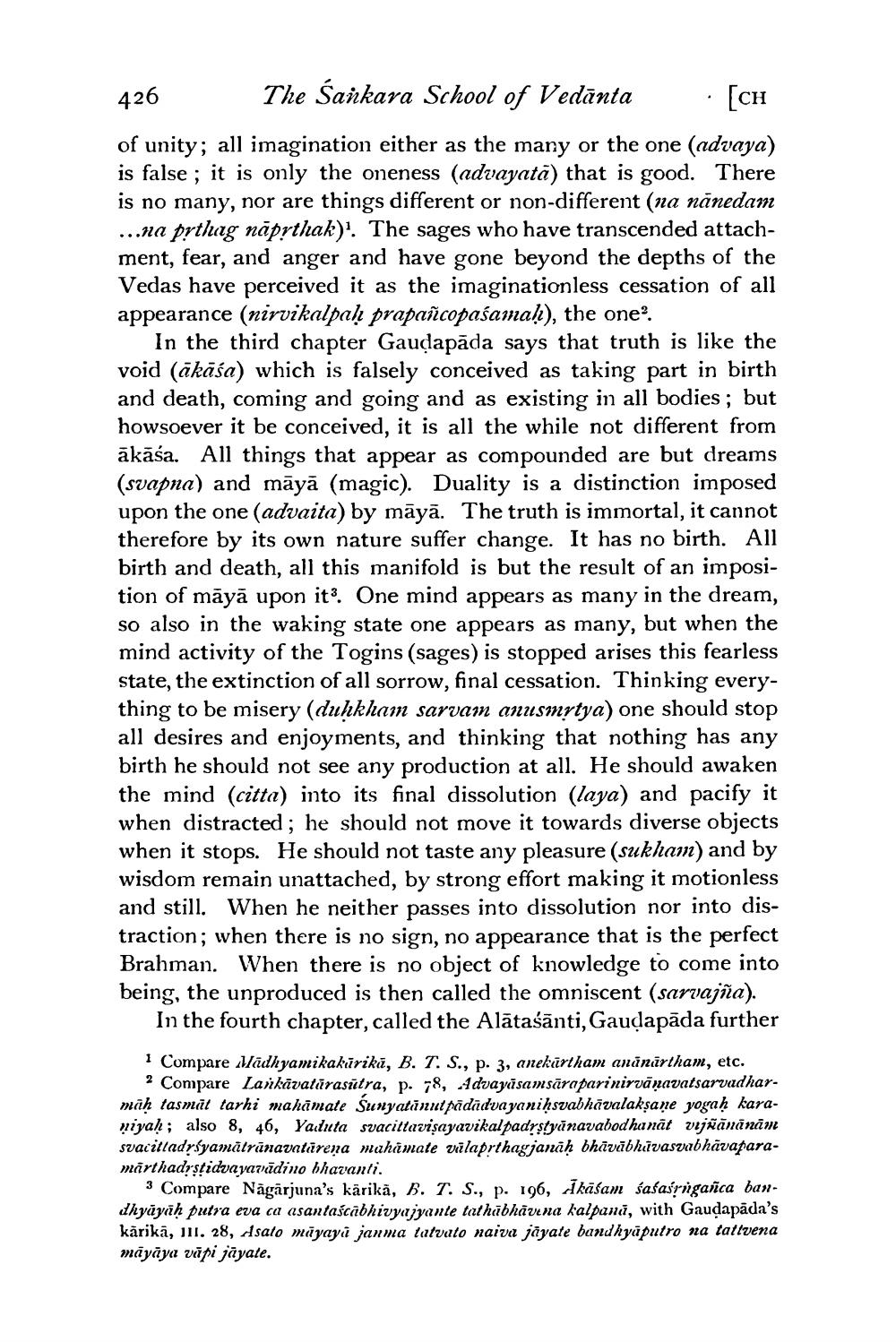________________
426
The Sankara School of Vedānta
[ch
of unity; all imagination either as the many or the one (advaya) is false ; it is only the oneness (advayată) that is good. There is no many, nor are things different or non-different (na nănedam ...na prthag näprthak)! The sages who have transcended attachment, fear, and anger and have gone beyond the depths of the Vedas have perceived it as the imaginationless cessation of all appearance (nirvikalpaḥ prapancopaśamal), the one?
In the third chapter Gaudapāda says that truth is like the void (ākāśa) which is falsely conceived as taking part in birth and death, coming and going and as existing in all bodies; but howsoever it be conceived, it is all the while not different from ākāśa. All things that appear as compounded are but dreams (svapna) and māyā (magic). Duality is a distinction imposed upon the one (advaita) by māyā. The truth is immortal, it cannot therefore by its own nature suffer change. It has no birth. All birth and death, all this manifold is but the result of an imposition of māyā upon it. One mind appears as many in the dream, so also in the waking state one appears as many, but when the mind activity of the Togins (sages) is stopped arises this fearless state, the extinction of all sorrow, final cessation. Thinking everything to be misery (duḥkham sarvam anusmrtya) one should stop all desires and enjoyments, and thinking that nothing has any birth he should not see any production at all. He should awaken the mind (citta) into its final dissolution (laya) and pacify it when distracted; he should not move it towards diverse objects when it stops. He should not taste any pleasure (sukham) and by wisdom remain unattached, by strong effort making it motionless and still. When he neither passes into dissolution nor into distraction; when there is no sign, no appearance that is the perfect Brahman. When there is no object of knowledge to come into being, the unproduced is then called the omniscent (sarvajña).
In the fourth chapter, called the Alātaśānti, Gaudapāda further
I Compare Mädhyamikakirikā, B. T. S., p. 3, anekārtham anānārtham, etc.
2 Compare Lankāvatārasūtra, p. 78, Advayasamsāraparinirvāṇavatsarvadharmah tasmiit tarhi mahimate Sunyatanut pādādvayaniņsvabhāvalaksane yogaḥ karaniyah; also 8, 46, Yaduta svacittavisayavikalpadrstyānavabodhanāt vijñānānām svacittadrśyamātrānavatāreņa mahamate vilaprthagjanāḥ bhāvābhiivasvabhāvaparamarthadrsțidvayavādino bhavanti.
3 Compare Nāgārjuna's kärikā, B. T. S., p. 196, lkāšam sašasrigañca bardhyāyāḥ putra eva ca asantaścâbhivyajyante tathābhāvina kalpani, with Gaudapāda's kārikā, lll. 28, Asato mayaya janma tatvato naiva jāyate bandhyāputro na tatlvena māyāya vipi jāyate.




